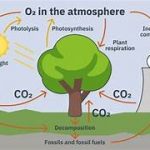Climate Change Policies: Approaches Across Different Nations
Introduction
Climate change is a global crisis that demands urgent action from nations worldwide. Governments across the globe have implemented various policies to mitigate climate change, reduce greenhouse gas emissions, and adapt to environmental shifts. While some countries lead the way with ambitious targets and groundbreaking innovations, others struggle due to economic constraints and political challenges. This article examines climate change policies across different nations, highlighting their successes, challenges, and implications for global sustainability.
The Paris Agreement: A Global Framework
The 2015 Paris Agreement is a landmark international treaty that unites nations in the fight against climate change. Its primary goal is to limit global temperature rise to well below 2°C, with efforts to cap it at 1.5°C. Countries submit their own Nationally Determined Contributions (NDCs) outlining climate action plans. Despite broad participation, implementation varies significantly among nations.
Climate Change Policies in Leading Nations
European Union: Ambitious and Comprehensive Measures
The European Union (EU) has established itself as a leader in climate policy through initiatives such as the European Green Deal, which aims for carbon neutrality by 2050. Key policies include:
- Emissions Trading System (ETS): A cap-and-trade program that limits industrial emissions while allowing market-based trading.
- Renewable Energy Targets: The EU aims for at least 42.5% of its energy to come from renewable sources by 2030.
- Carbon Border Adjustment Mechanism (CBAM): A tariff on carbon-intensive imports to encourage global emission reductions.
These policies have driven emissions reductions but face challenges, including balancing economic growth with climate commitments and ensuring cooperation among member states.
United States: A Mixed Approach
The United States’ climate policy has fluctuated due to political shifts. Under the Biden administration, the U.S. has rejoined the Paris Agreement and introduced:
- Inflation Reduction Act (IRA): A landmark investment in clean energy, offering incentives for solar, wind, and electric vehicles.
- Clean Power Plan (CPP) and Its Successors: Regulations to limit carbon emissions from power plants.
- State-Level Initiatives: California, New York, and other states lead with aggressive renewable energy policies and emission reduction targets.
However, federal climate policies face political opposition, and the long-term commitment depends on future administrations.
China: Balancing Economic Growth and Sustainability
As the world’s largest carbon emitter, China has made significant strides in climate policy while balancing economic development. Key initiatives include:
- Carbon Neutrality by 2060: China has pledged to peak carbon emissions by 2030 and achieve neutrality by 2060.
- Massive Renewable Energy Investments: China leads in solar and wind energy production, surpassing global competitors.
- Coal Dependency Challenges: Despite progress, China continues to rely heavily on coal, complicating its emission reduction goals.
China’s policies reflect a commitment to sustainability but require further reductions in fossil fuel use to meet long-term targets.
India: The Challenge of Development and Climate Action
India, the third-largest emitter, faces the dual challenge of economic development and climate action. Its policies focus on:
- Renewable Energy Expansion: Aiming for 500 GW of non-fossil fuel capacity by 2030.
- Afforestation Programs: Initiatives like the Green India Mission promote reforestation and biodiversity conservation.
- Coal Dependency: Like China, India faces difficulties in phasing out coal due to economic and energy security concerns.
India’s approach balances sustainable growth with the needs of a rapidly growing population, but it requires international support for clean energy transitions.
Small Island Nations: The Fight for Survival
Small island nations, such as the Maldives and Tuvalu, are on the frontlines of climate change. Their policies include:
- International Advocacy: Leading global discussions on climate justice and financing for vulnerable nations.
- Adaptation Measures: Constructing sea walls, relocating communities, and investing in resilient infrastructure.
- Renewable Energy Commitments: Ambitious goals for 100% renewable energy reliance.
These nations contribute minimally to global emissions but face existential threats from rising sea levels.
Challenges in Implementing Climate Policies
Despite global efforts, several challenges hinder effective climate action:
- Economic Constraints: Developing nations require financial aid to transition to clean energy.
- Political Opposition: Climate policies often face resistance from industries and political groups.
- Technological Gaps: Innovations in carbon capture, storage, and clean energy are essential but require investment.
- International Cooperation: Ensuring compliance and support among nations is crucial for success.
The Path Forward
To achieve meaningful climate action, nations must:
- Strengthen international cooperation and financial support for vulnerable countries.
- Invest in research and development of clean energy technologies.
- Implement stricter regulations and incentives for emission reductions.
- Encourage sustainable practices at individual and corporate levels.
Conclusion
Climate change policies vary significantly across nations, reflecting diverse economic, political, and environmental realities. While progress has been made, challenges remain in achieving global climate goals. A unified, cooperative approach is essential to mitigate climate change and ensure a sustainable future for all.


